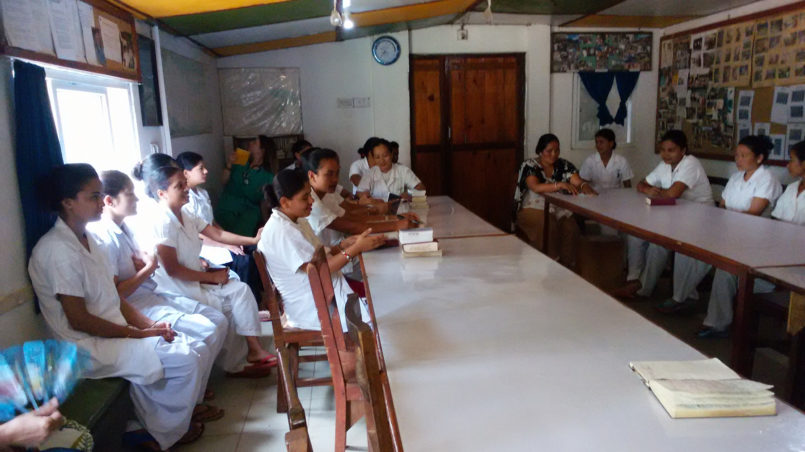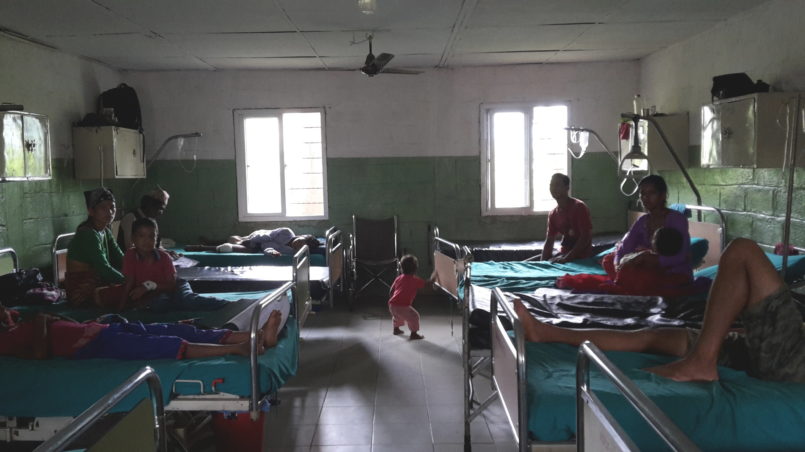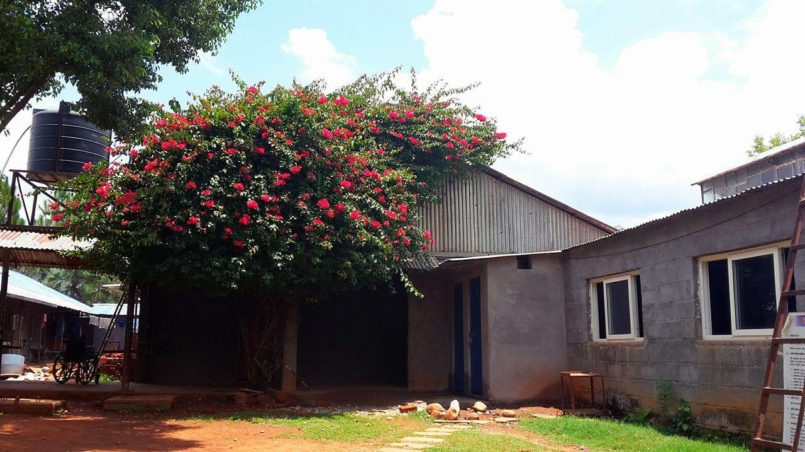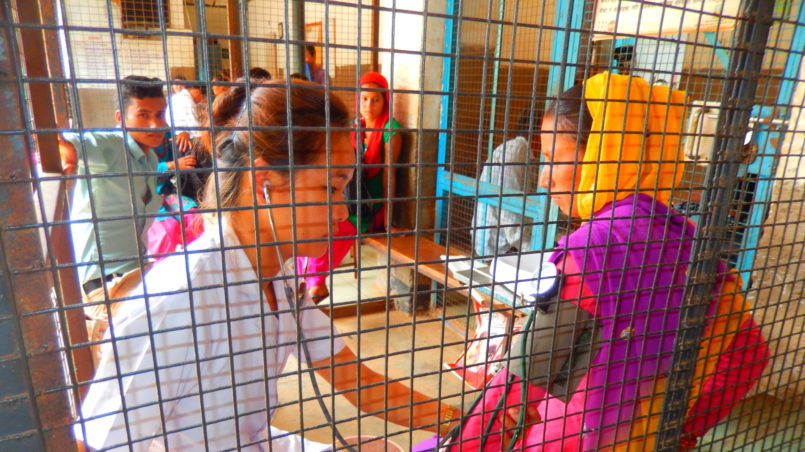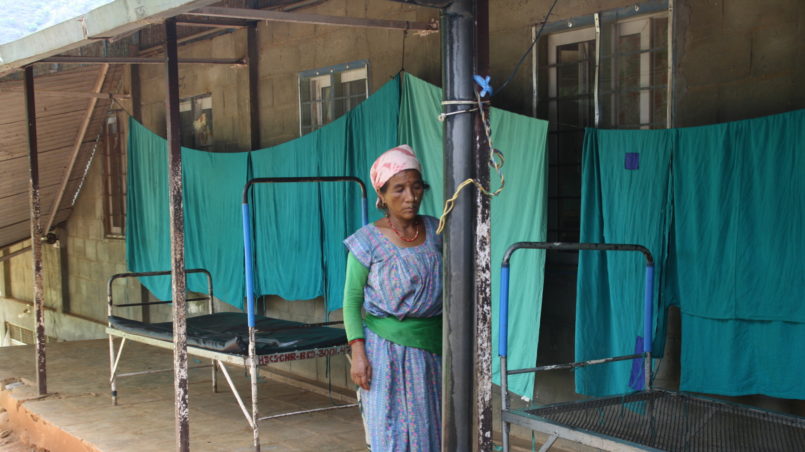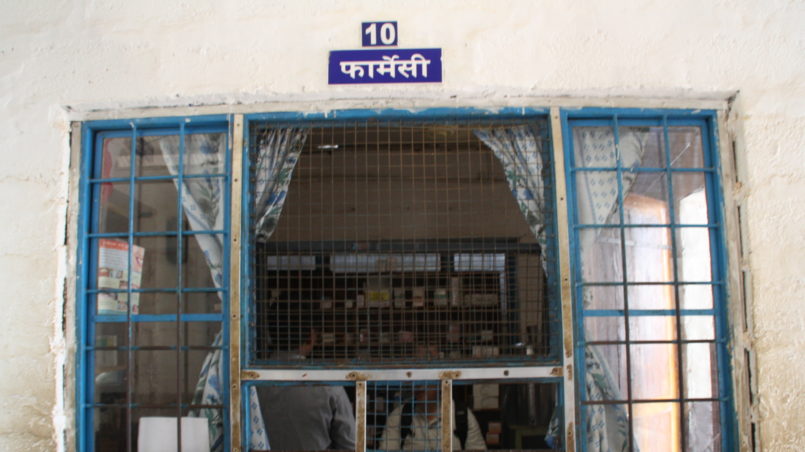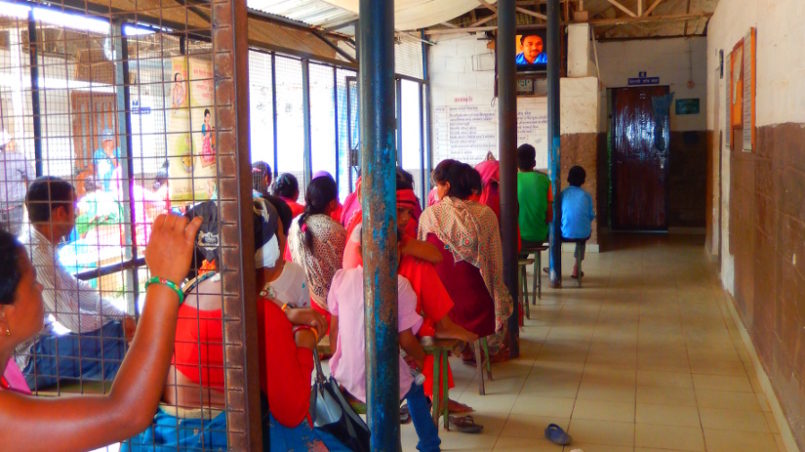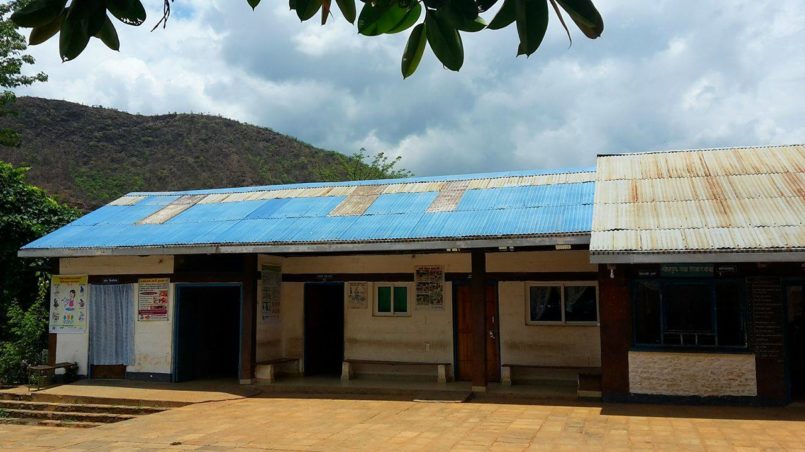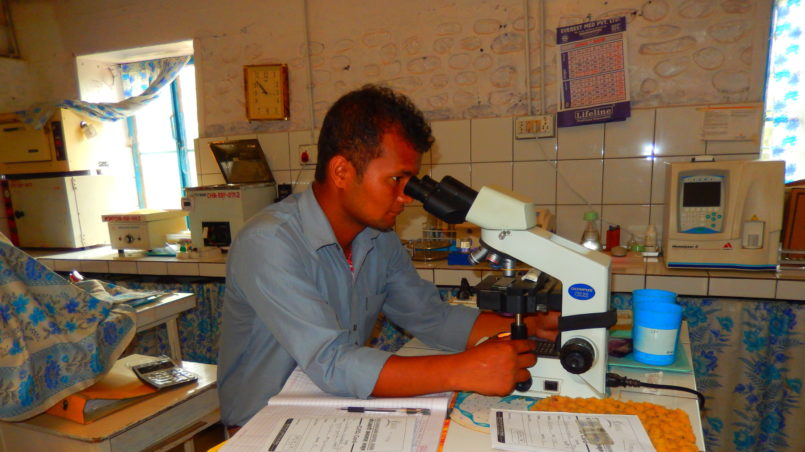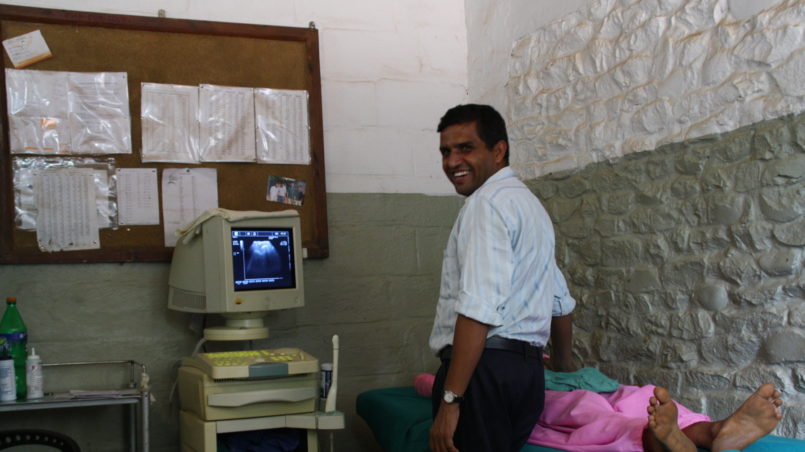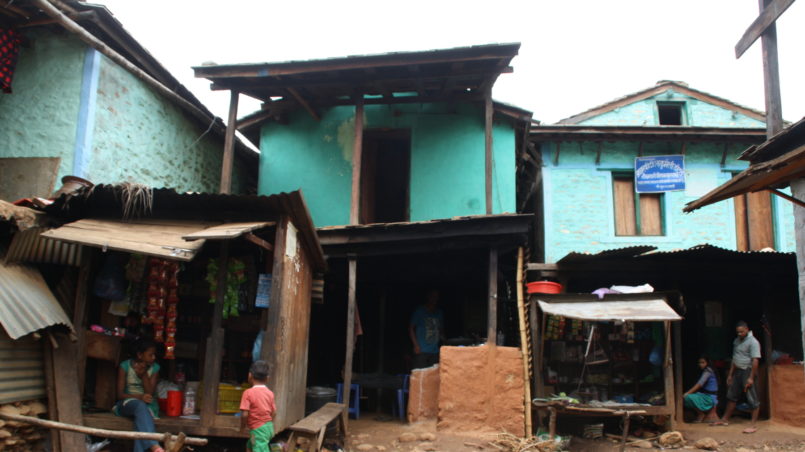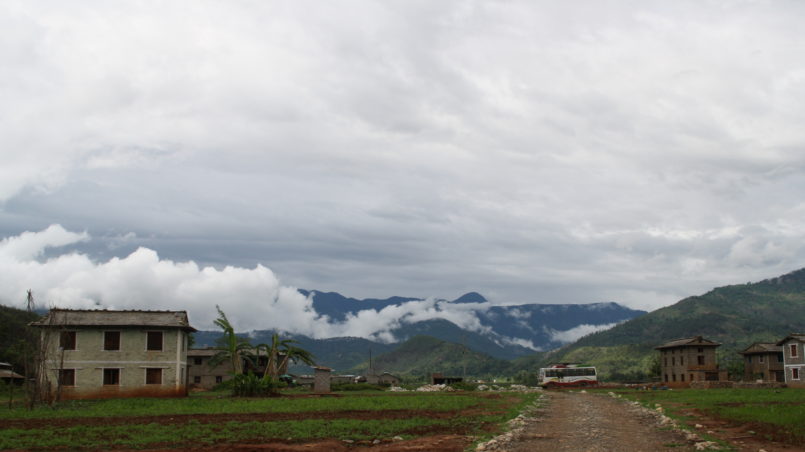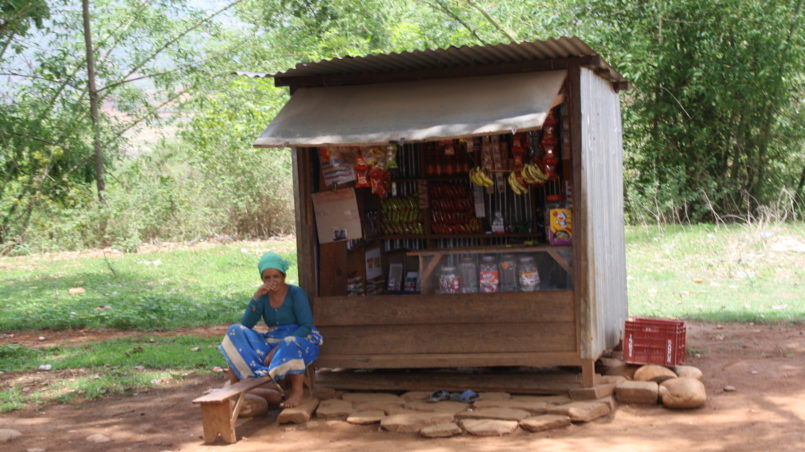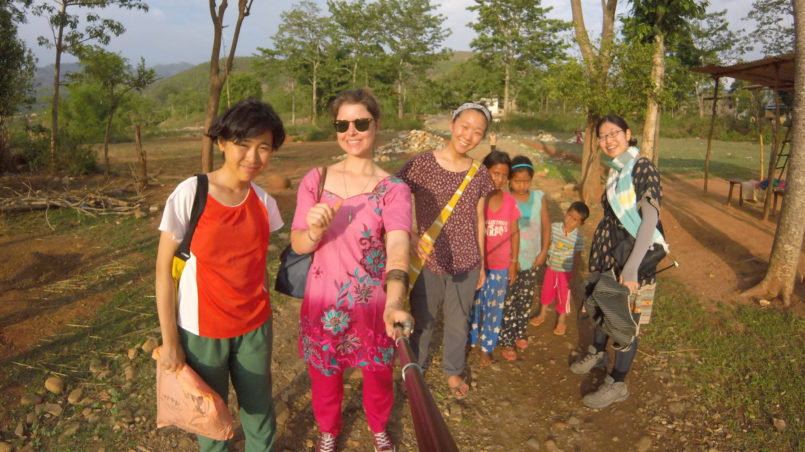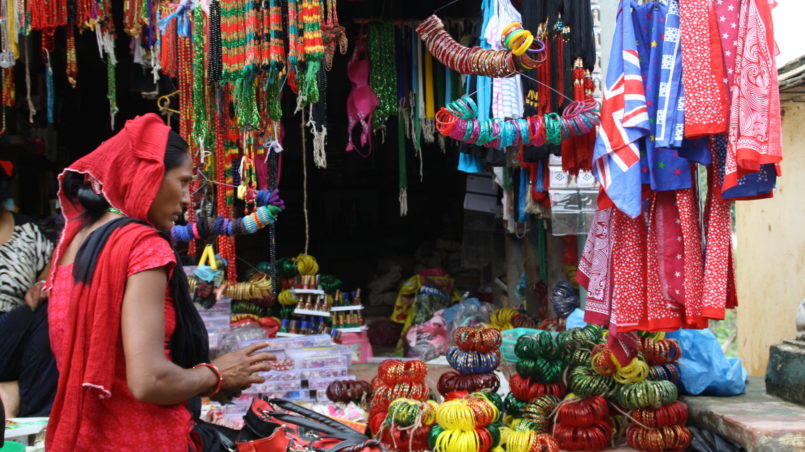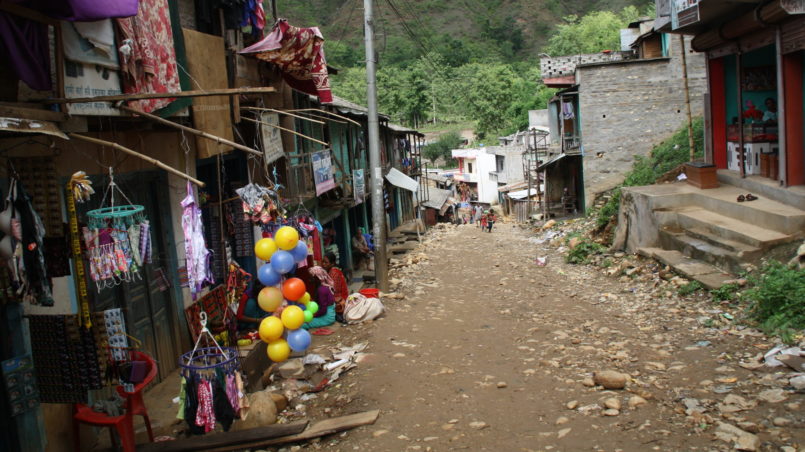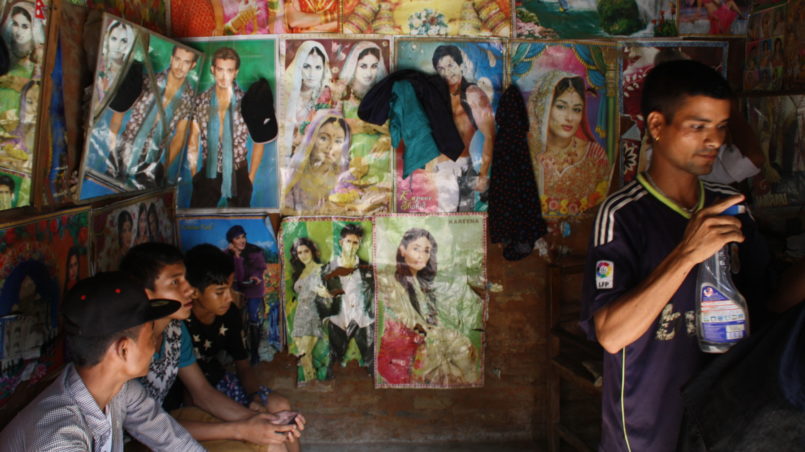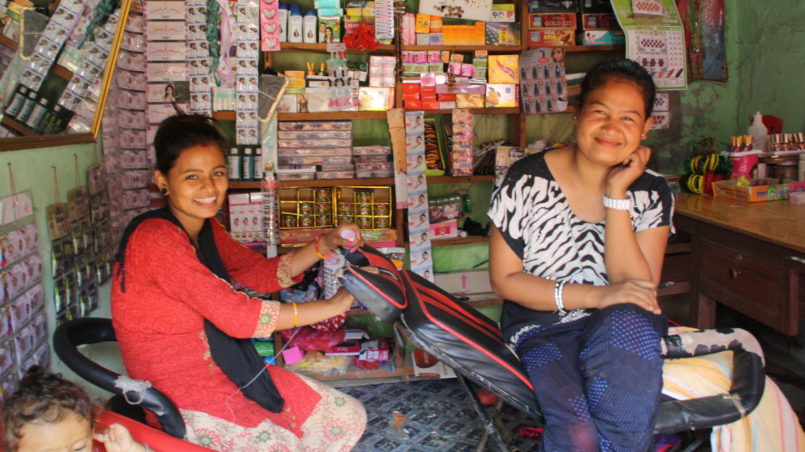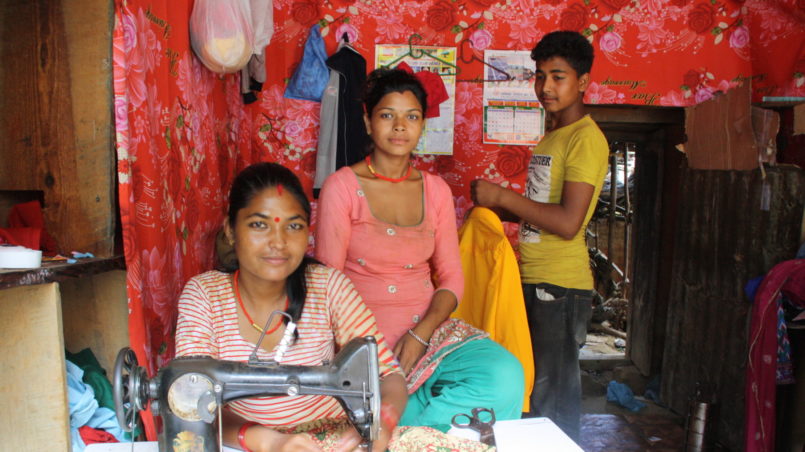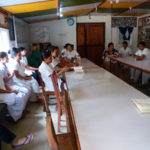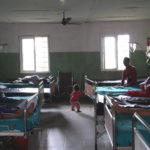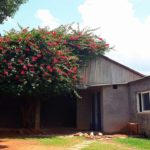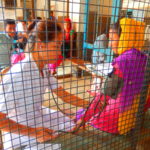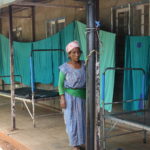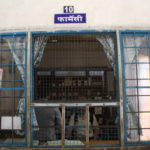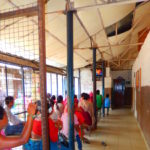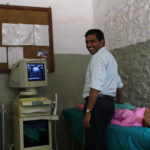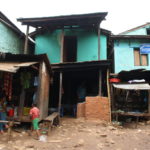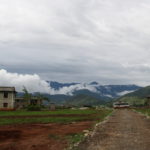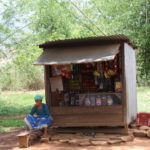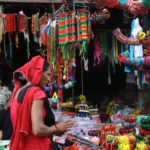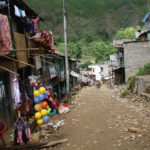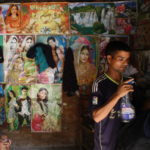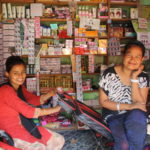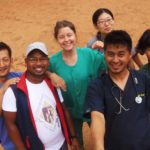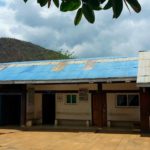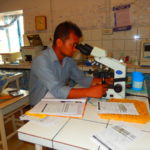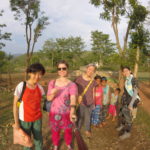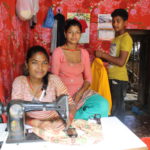As a doctor in Nepal: My first day
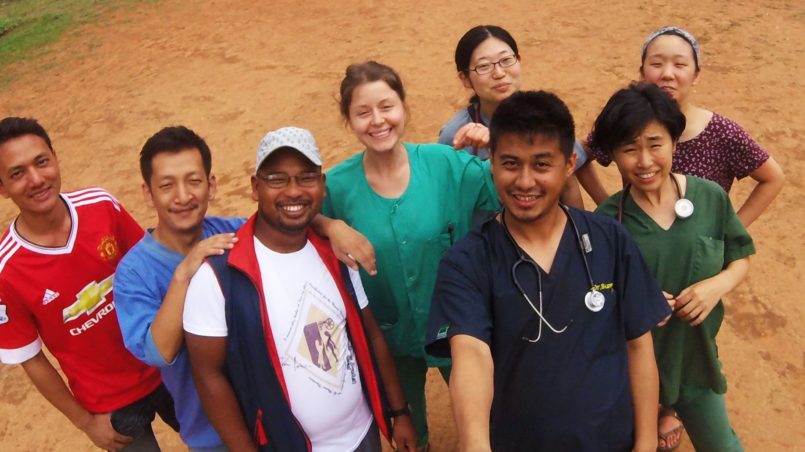
Since I went to sleep quite early last night, I wake up at around 6 and start my day with some jogging, running in circles around the football field in front of my room. The sun is not even fully up but it is already very humid and after only a few minutes I am sweating.
After my workout I enjoy a cold and refreshing shower, put on my scrubs which I brought from home and go to have breakfast. As I am late, all the Roti (also called Chapati, flat Nepalese bread) is finished already and I get offered normal bread. This happens only rarely here in Nepal as most people eat only Chapati and don’t know how to make western bread. While enjoying my breakfast, I continuously hear the word Didi being directed towards our cooking lady and, because I don’t know what this means, I assume it is her name and start calling her Didi too.
Just after breakfast, at 9, all the hospital staff come together for the morning meeting. All the nurses are dressed in white, wearing the traditional loose Aladdin pants and everyone else is wearing blue-greyish dresses. It comes as a surprise to me but, before talking about the previous night and the health of the patients, we start the day with singing and guitar playing – followed by prayers and reading verses from the Bible.
I notice that many patients start to come closer to the room to witness this beautiful ceremony from close up, standing outside the door or looking through the window. The whole room is lightening up with this extreme positive energy, which is spreading outside, throughout all the hospital – it is almost magical. I simply love it and believe that this is a great way to start the day. After the shift handover, we get introduced to the team and everyone welcomes us with a big and heart-warming smile.
Right after we finish the meeting, we go for a hospital round to check on the patients. They are already waiting in their beds and thankfully everyone seems to be doing fine so far. Chaurjahari hospital is the largest hospital out of the seven districts in the area, consisting of three main patient wards and two smaller wards, offering a total of 40 beds. The wards seem quite empty since it is harvesting season and, because most people in this area make their living through farming, they choose not to go to the hospital as this would result in them making a loss on their crops. As we walk through the hospital, again I keep hearing the word Didi everywhere and I wonder in my mind why everyone in this village has the same name…
As soon as we finish the round, the doctors show me around the hospital: there is one delivery room, two operating theaters, one observation room, one emergency room, a laboratory, a radiography room and also a pharmacy. Even though it seems quite big, they tell me that they are trying to expand. Sometimes the hospital is so full that people have to sleep in the corridors or even outside. The doctors tell me that I am most welcome everywhere and I choose the observation room for my first day..
The hospital is constructed in an open kind of way and the sun shines through it, making it extremely hot; actually we are in Monsoon season but unfortunately it hasn’t rained so far. Thankfully the observation room has a fan, giving me the chance to get a break from the heat and to concentrate on my work.
During the ultrasounds of pregnant ladies and while checking on the health of their babies, some women ask for the sex and even though it would be nice to tell them, the staff is not allowed to since sadly, there have been incidents where a family decided to get an abortion because they didn’t want to give birth to a girl.
After some time, one of the doctors comes in and says that we can come with him to the operation theater to observe an emergency C-section. I follow him, change my clothes, wash up and enter the operating theater. I notice that the mother is very nervous and scared, almost on the edge of crying – so even though we don’t speak the same language I try to calm her down and give her some comfort.
Just before starting the surgery, we all hold hands and the main doctor speaks out a prayer – only then does he make the first incision. Twenty minutes later a healthy Nepalese baby girl is born and everybody is happy and relieved. As soon as the doctors finish, we all got together to enjoy our lunch. The word Didi is still stuck in my head and I can’t stop myself from wondering what it really means …
Didi is not the name of all the women here in the village but it simply means sister. I would never have guessed that. Out of respect men and women use the word Didi to refer to the women and the word Bhaiya to refer to the men – since they believe we are all brothers and sisters.
Even though I feel like a fool for having thought it was a name, I really like this way of everyone calling one and another brother and sister and it is actually the first time I have ever heard about this.
My hospital day finishes at around 4 pm, as soon as all the ultrasounds of the pregnant women are complete. I go home to change my clothes and visit the local bazaar and the village along with the Japanese women. As we leave the hospital area, we pass by some local shops selling fruits and vegetables as well as locally prepared food.
We continue towards a very plain and flat road, which offers us good views over the fields with the buffalos and goats, the river, the houses and the entire surroundings. While walking we see many local kids running around who stop and start to walk along with us, asking questions like: „What’s your name? Where are you going? Where are you from? How are you?” etc. These are the sentences they learn in English but as we reply, unfortunately, they don’t really understand what we are saying.
After a 20-minute walk, which takes us through some more fields, shops and even a school, we reach the main bazaar. It is a long straight street full of shops, right and left, which goes downhill after a few meters. People offer us all kinds of things: material for clothes, cooking utensils, fruit, local accessories (bracelets, anklets, earrings, necklaces, nose rings, hair accessories, etc.) and there are even tailors and hairdressers.
Since we are the only tourists in the whole village, everyone is very curious about us, saying Namaste (local greeting) and I am very aware that all eyes are directed to us. As much as it is nice to be welcomed in such a way, it is also quite overwhelming for me to find myself at the extreme center of attention. I know I will have to get used to this but I also know that this will take some time.
After checking out some shops, I buy some material and take it to the tailor nearby as I would like her to make me a Kurta, which is a top part which looks similar to a dress, trousers and a scarf which is used to cover the chest. She tells me to come back in two days and I am already very excited about how it will look.
Today I learnt a lot about Nepalese culture and I must say that I like it a lot. I am positively surprised by the large Christian community they have here in the hospital (before coming to Nepal I believed that everyone in the country would follow the Buddhist religion) and I really enjoy the prayers and the singing in the morning, before surgery and in the evening.
It has been a very busy and successful first day, full of new impressions, experiences and emotions and I cannot wait for more to come.
Namaste

